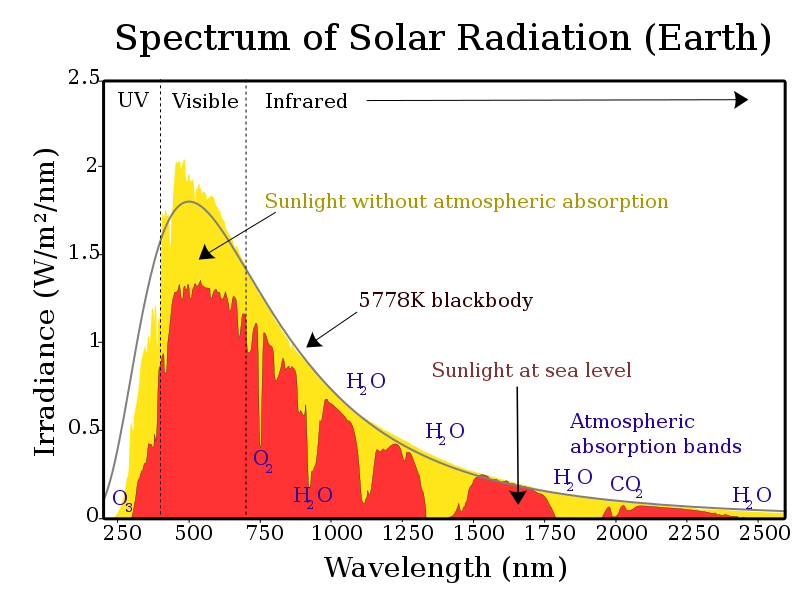Both of you (Ian-Wuw) are obviously confused.
Solar irradiance - Wikipedia
Average annual solar radiation arriving at the
top of the Earth's atmosphere is roughly 1361 W/m2.
[24] The Sun's rays are
attenuated as they pass through the
atmosphere, leaving maximum normal surface irradiance at approximately
1000 W /m2 at sea level on a clear day. When 1361 W/m2 is arriving above the atmosphere (when the sun is at the zenith in a cloudless sky),
direct sun is about 1050 W/m2, and global radiation on a horizontal surface at
ground level is about 1120 W/m2.[25] The latter figure includes radiation scattered or reemitted by atmosphere and surroundings.
The 1360 Watts/m^2 is the
integral of the Watts\m^2\nanometer of the yellow portion (top of atmosphere)
and of the 1360 Watts/m^2 only 1050 Watts/m^2 make it to the surface.
The 1360 value for m^2 is the steradian and they converted that to a flat surface m^2 equivalent and averaged it for a
horizontal surface as it would be at zenith.
What matters is that only 77 % makes it through the atmosphere going from the top down to the surface.
All the arguments are what happens at
15 micrometers which would be 15 000 nanometers,
Instead of 23 % absorption the absorption at that wavelength is 100%
were it not for the CO2.
The CO2 cuts both ways ! The warmers choose to look only at the amount of energy it blocks from radiating up and out and for good reason have no interest how much energy coming from the sun between 14 and 16 micrometers is blocked from heating the surface due to CO2.
The spectral radiance for 6000 deg K is 0.902 Watts/(sr nm m^2) ..down dwelling and blocked.
And for 300 K 0.0066 Watts/(sr nm m^2) blocked from radiating up.
The amount which is blocked going down dwarfs the portion which is blocked from going up at the spectral band from 14 to 16 micrometers and that`s why the only temperature that increases with CO2 is that in the computer models and not the real world.
Have a nice day!

